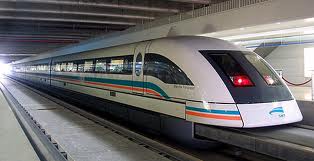 Until about six months ago I had a model train set in my basement. We were renovating and I finally parted with my world of miniature locomotives and boxcars. They found a good home when we had a garage sale.
Until about six months ago I had a model train set in my basement. We were renovating and I finally parted with my world of miniature locomotives and boxcars. They found a good home when we had a garage sale.
Trains have always fascinated me because they are such an expression of our technical society. Trains as a technical invention owe a debt to coal mining, and the steam engine. Tramways made of wooden rails were used to transport tubs of ore from mines to refineries in 16th century Europe. Funicular rail systems moved goods and people up and down hills and mountainsides. These early “railways” used human or animal power. But it was the transportation of coal as the primary fuel of the early Industrial Revolution in Europe that led to modern train transport.
The 19th century was the age of steam-driven railway technology. Nations built empires by laying track. North America saw transcontinental railway systems built both in the United States and Canada. Great Britain tied its global empire together by ship and rail, building railway networks in Asia and Africa to support colonial and commercial ambitions.
The 20th used a variety of sources of energy to drive rail transport from diesel to electric to the first MagLev trains. Rail design matured as steel rails replaced iron. Concrete rail beds replaced aggregate material and wooden cross ties making the “clackety-clack” sound of trains disappear. At the end of the 20th century high-speed passenger trains appeared in France, Germany, Japan and China.
Freight Trains in the 21st Century
In North America the latter part of the 20th century saw a general decline in the use of trains as trucks became the major transporter of goods and automobiles and highway infrastructure reduced passenger traffic. Yet in North America trains continue to represent the most sound economic and environmental method of moving bulk and manufactured goods across he continent.
Of all the transport industries discussed in these blogs, railways have traditionally been the greenest in terms of emissions and fossil fuel use. The first decade of the 21st century has seen new low emission diesel and hybrid locomotives introduced into freight railway transport networks further reducing the carbon footprint of the industry. The Evolution, a product of General Electric, is one of many new locomotives that have come to market since 2005. It features an air-to-air cooling system to burn fuel more cleanly and consumes far less fuel than locomotives with similar horsepower. General Electric is also introducing hybrid locomotive systems that capture energy from braking in a similar way to hybrid automobiles. The recovered energy is captured by an array of batteries and used to supplement power requirements. The amount of energy captured equals about 1500 kilowatt-hours or enough to light up 50 homes for a day.
Freight trains today are the land equivalent of super container ships traveling on land. They play a critical role in moving goods arriving from overseas to destinations inland or even to coastal locations on the other side of a continent. Container freight has replaced grain, coal, refined fossil fuel products and other bulk transported materials as the principal cargo of railways today. The technology used to track containers is technology that railways can deploy to track individual cars and their contents. Combined with GPS, railroad information systems can know at any time exactly where a container of goods that arrived in Long Beach, California, from China, is while on route to Kansas City, Missouri.
What other technologies are being deployed for freight railway systems?
- Automatic Equipment Identification and Position Tracking – Moving goods faster and in greater quantity are two of the goals of freight railway operators. This means enhancing the existing sensor network that has become standard to railway systems in North America and Europe. Since 1995 Automatic Equipment Identification (AEI) tags accompany every railway car. Track scanners check for mechanical defects as cars goes by. New train control systems are taking advantage of GPS technology to monitor train cars on remote tracks such as those in northern parts of Canada and Alaska where trackside sensors are impractical because of weather. Lat-Lon, a Colorado company, has developed solar-powered GPS technology that monitors a wide range of real-time data on the status of a rail car and its contents and sends alarms to a central dispatcher.
- Collision Avoidance Systems – Newly developed braking systems technology reduces the amount of time and distance required to stop freight trains. EP-60 is a product of New York Air Brake Corporation. The technology employs a central computer controller linked to individual, wire-based controls in each railway car. The system applies braking simultaneously across all cars in the train when an object is spotted on the track dramatically reducing the stopping distance required to avoid collisions. This allows operators to increase speed without compromising safety.
- Autonomous Train Intelligence – Ultimately freight operators are looking at finding ways to automate railway transport to operate autonomously as much as possible. Automated train operations or ATO is in operation today on subway systems in some U.S. cities and in many more locations in Europe and Asia. Singapore was the first country to deploy ATI and ATO in 2003. What characterizes successful ATO implementations is the limited number of stops and automatic train protection (ATP) technology that is built into urban transit to ensure safety. ATO refers to the automatic operation involved in driving the train. When combined with an Automatic Train Supervision (ATS) system, a network of trains can operate autonomously across a closed track system. Driverless Train Operation (DTO) requires advanced security and platform controls for managing passenger flow. To apply ATO to freight operations will need autonomous intelligence combined with onboard detection technology and a sophisticated infrastructure of trackside sensors plus regional operational centres tied to a common computer-controlled central network. That level of sophistication presently does not exist but it is on the development horizon and should be realized by mid-century.
Passenger Trains in the 21st Century
Train travel has been popular since the early 20th century and high-speed trains first appeared as early as 1933 in both Europe and the United States. These early trains reached peak speeds of 130 kilometres (80 miles) per hour. Just before World War II Italy introduced train travel between Milan and Florence with peak speeds of 203 kilometres (126 miles) per hour. In 1957 Japan introduced its first high-speed “Bullet” trains and by the mid-1960s provided rail service between Tokyo and Osaka operating at speeds of 217 kilometres (135 miles) per hour.
Conventional high-speed trains provide high-capacity transportation and minimal new investment in infrastructure making them very attractive. High-speed trains represent a better energy option than air, automobile and bus transit. What always made trains attractive to passengers, the ability to operate them with a very small footprint, and create connections from downtown to downtown, gives new impetus to developing high-speed train infrastructure.
High Speed Trains of the Future
The issues of speed, intelligence and safety characterize the passenger train industry as well. Let’s look at the technologies that 21st century passenger trains are incorporating and what is potentially doable before the end of the century.
- Conventional High-Speed – In the last 50 years 26 countries have invested in the building of high-speed rail lines. I remember as a teenager in the 1960s taking the Rapido, a high-speed train from Toronto to Montreal, a 550 kilometer (330 miles) trip in just under 5 hours. Twenty years later I travelled that same route on the Turbo at even higher speeds, making the trip in a little over 3 hours. At no time was I ever aware of the difference in speed. And the Turbo was a much more comfortable ride than the Rapido, its predecessor.Today’s high speed trains make my experiences seem like slow crawls. In December 2010, a Shanghai-to-Beijing passenger train reached a speed of 486 kilometers (302 miles) per hour travelling on an unmodified rail bed. Japan, China, South Korea and Taiwan are upgrading their rail networks to increase conventional high-speed passenger traffic . In Europe high-speed rail networks currently operate in 11 countries with Spain, Germany, the United Kingdom and France the most significant players. In North America there are few places today where high-speed trains operate. Plans to build high-speed rail corridors in California, the northeastern and Mid-Atlantic states, the Pacific Northwest, the Mid-West joining Kansas City to St. Louis and Chicago, and in the corridor linking Windsor to Toronto, Montreal and Quebec City remain largely on the drawing board.
- Autonomous Train Operations – ATO provides many benefits to passenger as well as freight trains. These include lower operational costs, maximized performance, better customer service and the removal of human error from the safety equation. But to-date ATO implementations are limited to urban transit applications. To move to inter-city and trans-continental application rail systems need to add new signaling technology to provide an acceptable margin of safety. Hitachi of Japan is one of a number of companies developing digital train control systems that offer seamless interconnection between trackside monitoring technology and on-board train systems. Digital ATO features databases that keep information on the status of all components within a single train, store route data and train performance, receive information from trackside on the position of all other traffic ahead, and accordingly make decisions on speed and braking to ensure a wide margin of safety.
- MagLev – Magnetic Levitation Technology is deployed in very few countries today. Why hasn’t it been adopted more? Because MagLev trains need a dedicated right of way and cannot operate on existing rail infrastructure. MagLev trains contain onboard super-cooled magnets that are repelled by the application of an electric current built into the dedicated pathway. The trains float above the pathway and with only air friction to impede them can operate at very high speeds when compared to conventional high-speed trains. Currently MagLev technology is limited today to short distance routes implemented between Shanghai’s city centre and its airport at Pudong, a distance of 30 kilometers (19 miles).
- Vactrains – This technology is also known as Evacuated Tube Transport or ETT. Vactrains combine MagLev with sealed rights of way in which the air has been removed. With no air resistance the trains can achieve unheard of speeds. Theoretically it would be possible for Vactrain to achieve speeds of up to 8,000 kilometres (5,000 miles) per hour. At these speeds a train trip from New York City to Los Angeles would take no more than 45 minutes. Vactrains require technology to maintain a vacuum in addition to the super-cooled magnets used by the trains. But the energy used to move these trains would be minimal compared to operating jet aircraft trying to achieve similar speeds.









One of my readers had difficulty posting his comments. His name is Christopher Miller and he indicated a particular interest in MagLev technology. Here are his thoughts on my original posting.
I think your claims about maglev merit correction. You make two claims. First, that maglev hasn’t found widespread use because the vehicles “need a dedicated right of way and cannot operate on existing rail infrastructure”. And second, “MagLev trains contain onboard super-cooled magnets that are repelled by the application of an electric current built into the dedicated pathway”. I’ll address each in turn.
1. Much like electric or fuel cell cars, the main reason maglev is still not very widespread is that it is a still-developing set of related and often incompatible technologies, with all that implies for standards, infrastructure and so on. The fact that (current, first-generation) maglev technologies all require a dedicated right of way and cannot operate on existing rail infrastructure is not necessarily a point against them, though. The same incompatibility holds for rail w.r.t. roadways and vice versa, and when the twain meet, we know the kinds of problems that result. And, coming to mention it, similar observations hold for high speed rail (with all the extra stresses on the track and railbed) coexisting with existing lowspeed rail, especially freight rail. None of this has ever been mooted as an argument against rail (or highways, depending on which you prefer) — yet the logic holds as strongly (or weakly) in one case as in the other. Same for airplanes: you need special, land-hogging airports for them to take off and land: they are incompatible with existing roadways and rail lines. Not much of an argument against.
All that doesn’t go to say that a maglev technology that *is* designed to be compatible with existing rail infrastructure — and could integrate with air infrastructure to boot — would not have significant and obvious advantages over current maglev technologies. We are used to intermodal transportation nodes already. You walk, pedal, take a bus, metro or tram, or drive to a train station and reverse the process at the other direction. Same with intercity bus, same with airports (and to a far lesser extent than in the past), and boats (and with these last ones, trains often come into the picture). Intermodal transfer points are a crucial aspect of intercontinental freight transportation.
The fact is that the two American co-inventors of the superconducting maglev technology being built in Japan (one of them from Richmond, Ontario originally, only about five doors down the main street from where I used to live) have taken the first steps in developing and testing a new generation of maglev technology that is specifically designed to operate along existing rail where desirable, transferring seamlessly back and forth to and from their main mode, namely grade-separated raised monorail guideways. The narrow, low-cost monorails are designed for safe 500 km/h operation outside urban areas, but can also be used in cities in areas where existing rail can’t take the vehicles. Example: a cross-country raised guideway from Montreal transitioning to existing track in southeast Ottawa into Tremblay Road station, with a low-footprint, raised guideway spur into the old Union Station at Rideau and Nicholas — perhaps with a raised platform station in between what is now the government conference centre and the Rideau Centre.
I’ve been following their work for a decade and a half, and met them on Long Island last year after proofreading their first book on the subject, _The Fight for Maglev_. I am in the middle of proofreading their second book at the moment: believe me, I’m familiar with the details! (smile)
You *could* conceivably integrate the Japanese and German maglev technologies with railway infrastructure (and the Germans have actually published drawings of a way to do it), but it would be much more awkward and expensive to do so than the simple and elegant procedure of attaching individual guideway panels on either side of the rails in the second-generation design.
2. First, maglev is a different paradigm from rail. Vehicles need not be linked together in consists like trains, anymore than vehicles on a highway. In all cases, there is a certain efficiency in doing so to reduce overall air drag at high speeds and thereby save on power over long distances. It’s only really with rail that train-like consists have been an inherent necessity: it’s more efficient to use a single powerful engine (or two or more) to power a long consist of linked heavy vehicles along the track than it is to have a separate engine for each vehicle. Road vehicles don’t require this because they can be lighter, with rubber wheels on asphalt or concrete for friction, whereas you need heavy steel and a heavy chassis to guarantee enough friction for traction on steel rail.
Since maglev vehicles are frictionless and propelled by guideway current, single vehicles are as efficient in general as multiple-vehicle consists. Despite this advantage, the single-track point-to-point designs of current guideway designs force you into a train mode because you can’t easily and efficiently switch frequent, low-headway individual vehicles back and forth from one track to another while conserving both high frequency and speed. The design of second-generation maglev allows automatic switching that is even more efficient than with existing rail, and comparable to the seamlessness of highway on- and off-ramps but without contact with the guideway. Because of this, you can easily and cheaply construct a dense and efficient network of turnouts impossible with first generation maglevs, that allow the network to handle heavy levels of individual vehicle traffic more comparable to a highway full of buses and trucks than to a railway with passenger and freight trains trying to share the same track — but with all those buses and trucks computer-controlled and guided at the same speed and distance from a central command point.
Second, it’s true that both the German maglev currently in operation in Shanghai (like the similar Korean Rotem and Linimo in Japan) and the American-designed maglev being built between Tokyo and Osaka are propelled by linear motor technology built into the guideway, acting on on-board magnets. But that’s as far as the similarities go.
Only the American/Japanese version uses supercooled superconducting magnets on board. The German/Chinese technology uses electromagnets continuously powered by on-board batteries. As far as propulsion goes, either kind of maglev is what provides the “surfboard effect” where the vehicles are propelled by waves of electric current in the linear motor guideway repelling the on-board magnets in the desired direction. The main difference is the kind of suspension. The German/Rotem/Linimo technology uses electromagnets on arms wrapping around the underside of the guideway; when powered, these are attracted to iron rails on the underside of the guideway. Their natural tendency is to clamp onto the metal, so they need to be continuously controlled by an on-board servomechanism that adjusts the current to the magnets to maintain a 1 cm gap between magnet and rail: this is electromagnetic suspension.
The Japanese, because they live in notably shakey islands, were more attracted to the US design for safety reaons than the Germans were; in this version, “electrodynamic” suspension, the superconducting magnets (far more powerful than electromagnets for the electric current) interact with induced currents in guideway windings to maintain a gap of 10-15 cm from the guideway and the ground — but only above a threshold speed. Until the vehicles are moving at that speed, they must be supported by rubber wheels; while above the threshold, the powerful fields of the superconducting magnets induce currents in guideway windings that automatically generate an equivalent magnetic field that repels the onboard SC magnets. With the “null-flux” guideway loop geometry developed for the SC maglev, any movement of the SC magnets away from equilibrium position with respect to the guidance loops (above threshold speed) automatically induces current (flux) that generates an equal magnetic force repelling the SC magnets back to equilibrium position, where flux in the windings is restored to zero. This is the automatic and inherent failsafe against derailing designed into electrodynamic suspension that was so attractive to the Japanese when they visited Powell and Danby, its inventors, back in the early 1970s.